
After that first post today, I had a bunch of images that Amanda Lynne had taken of the KÀ backstage tour, and the Fabulous Mister Fox put me in touch with some images from the technical rehearsal period of the show! It is absolutely outstanding to see these images with the consoles and monitors lighting up the camera’s view, right as the art is being born!
One aspect of KÀ that I felt I needed to break up into a new post is the projection system that has been implemented. At several times during KÀ you are exposed to large scale projections that move the largest mountains and swirl the world’s oceans, quite figuratively. Projections interact with the performers on several occasions, making the surface where they are performing have its own pulse. Rocks fall from performers’ footsteps; projected water reacts with where a performer is standing. People take running slides down the side of a mountain texture, and they leave an imprint. That is called precise attention to detail! An army of infrared sensors, position data from the scenic automation encoders, direct tracking of performers, and a system of inductive tiles on the Sand Cliff Deck track the projections and calculate them in real time.
Let me say that again: the video in KÀ is generated in real time along with the human interactions in the show.
The induction tile system is also quite amazing – there are 18,000 3X3 inch induction points, all which get their data sent directly to the projection computers via wireless. Also, during the show, since there are more than one type of surface being projected on, alternate projector settings are loaded during the show, and played through the three Barco R18 projectors shooting from FOH. This system is amazing to me – mostly because this is the payoff. This scene is the Sand Cliff Deck with projections interacting with the performers. This is quite possibly one of the most amazing moments in the show. It is ethereal, magic, and that 80,000 pound platform has performers on it, sideways, and fighting!

Battle, photo by Tomas Muscionico; Costume credit: Marie-Chantale Vaillancourt
The induction tile system – a sample tile:
There are so many random facts that I wanted to add in the other article but I couldn’t fit them in and still meet my format! Such as:
- KÀ was the first Cirque du Soleil show to encompass a cohesive storyline
- KÀ is the Egyptian meaning of the spirit of duality and the Japanese word for fire
- The language in the show is of Cirque du Soleil’s creation, breaking the language barriers for the multiple nationalities that comprise our audiences
- The harp in the main lobby is a real instrument created by Bill Close who performed the lobby music for the Grand Premiere
- Every seat in the KÀ Theatre has two speakers built into its headrest which allows sound effects to be targeted, manipulated and customized to any of 16 seating zones.
The music in KÀ is performed live – in a recording studio – and with a few live performers onstage, every night! The conductor and musicians are in the lower levels of the theatre in soundproofed studio rooms, with percussion separated into their own quiet room:
This shot is one of my favorites – a view through the bags protecting the spiral lifts to the post and beams. Amanda Lynne freaking rocks.
Lighting Production Shots!
Fox sent me the images below – I organized them into a gallery for you, and to make the page load faster! These shots are rehearsal photos – check out the tech tables all over that place!
More KÀ facts (thanks, Fox!):
- Seventy specialists worked more than 35,000 hours to produce the first full set of KÀ costumes at the Cirque du Soleil headquarters in Montreal.
- The stage can tilt through 100 degrees and rotate a continuous 360 degrees while artists are performing.
- One Forest hat takes 40 hours to make.
- Many artists glue Austrian crystals to their faces as part of their make-up.
- During the pre-show, approximately 120 fireballs are discharged.
These fireballs measure 30 feet in height and reach temperatures of 1200° Fahrenheit. - 119 pyrotechnic devices are fired throughout the show.
- The Props and Puppet Department is responsible for more than 500 individual props, 10 larger-than-life puppets, 21 mini puppets, and six butterflies.
- The Stick Bug puppet is over 16 feet long and is operated by two artists.
- The Snake is over 80 feet long.
- An estimated 1,300 hours went into making one crab puppet.
- Over 110 live arrows are shot through the air at each performance. The artists spent many hours in training to learn proper archery techniques.
- There are more than 160 harnesses for the artists, comprised of 21 different types.
- Each harness is hand-fitted to the individual artist and is inspected daily.
- For the Wash-up on the Shore scene, the beach is created using 350 cubic feet of granular cork from Portugal.
- Airbag training is held to teach artists the proper method to fall into air bags from different heights. Air bags (not visible to the audience) are used for falls over 20 feet.
A view of the flags from all nationalities working on KA, in their specially designed green room/dressing room/all kinds of other stuff building (that’s the technical term, you see):
All photos on this page, including the unmarked images owned by Cirque du Soleil, unless specifically noted otherwise, are protected under an Attribution-NonCommercial-No-Derivitives license. You can repost the photos and content as long as you give attribution to JimOnLight.com. Photographer credit, unless otherwise noted, is Amanda Lynne Ballard.

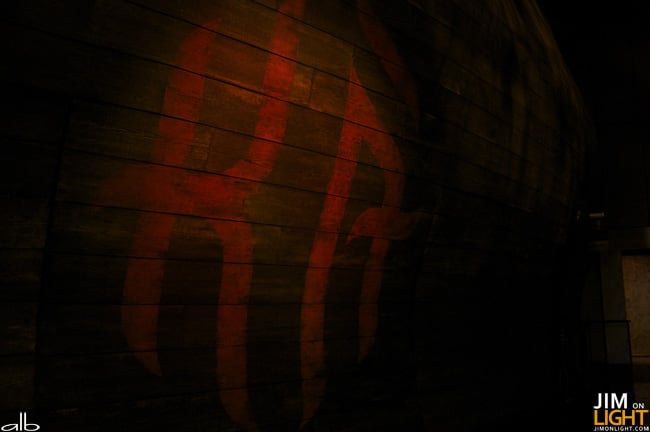
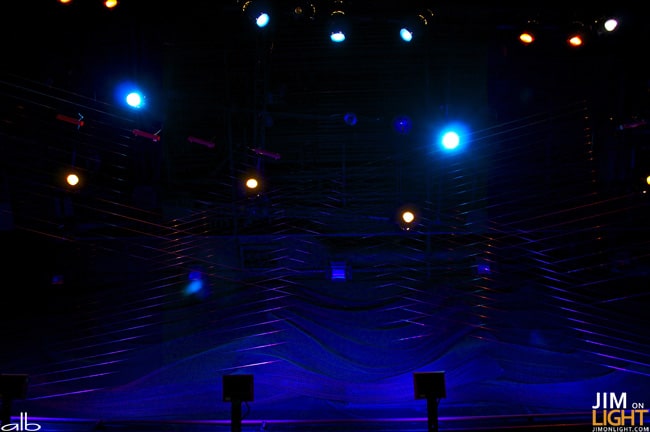

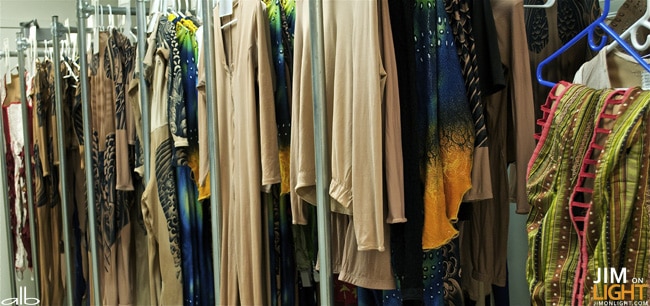
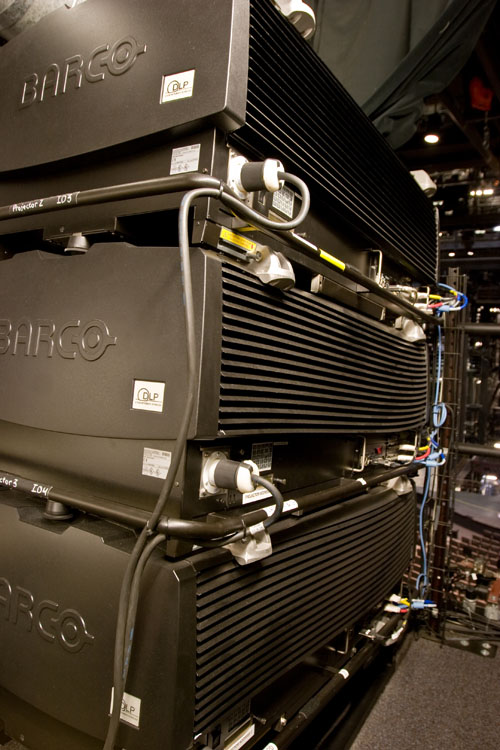

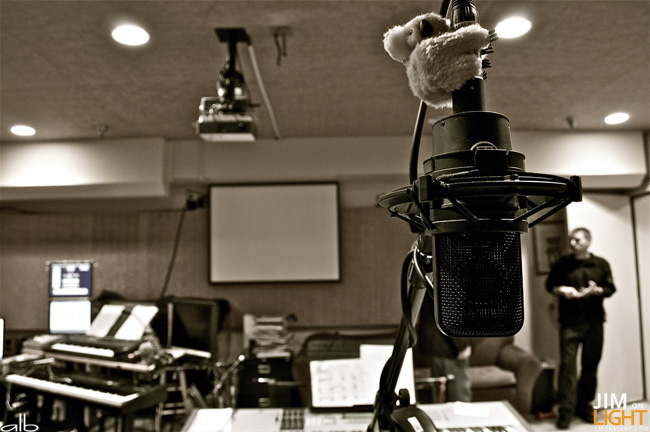
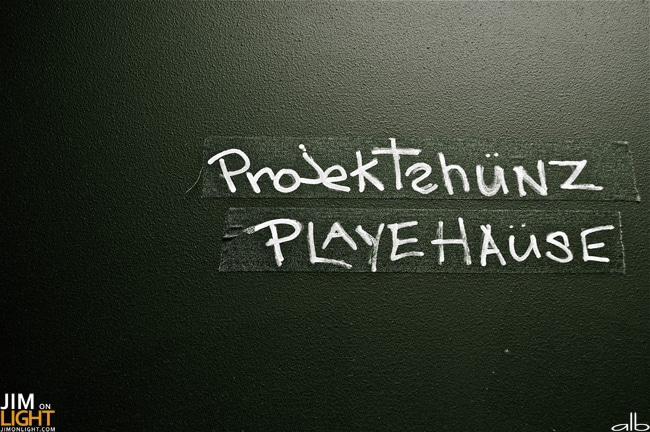

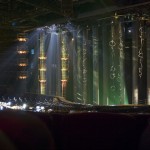
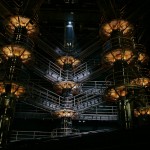
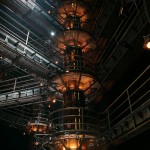
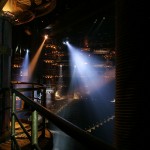
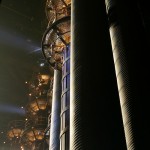
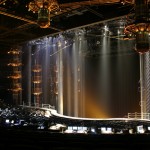
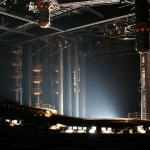
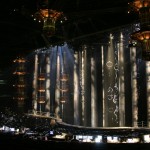
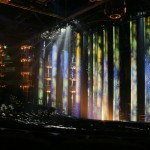
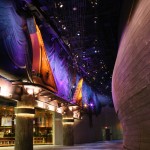
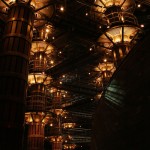
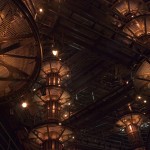
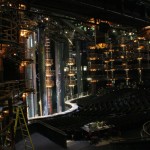



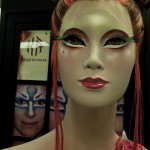

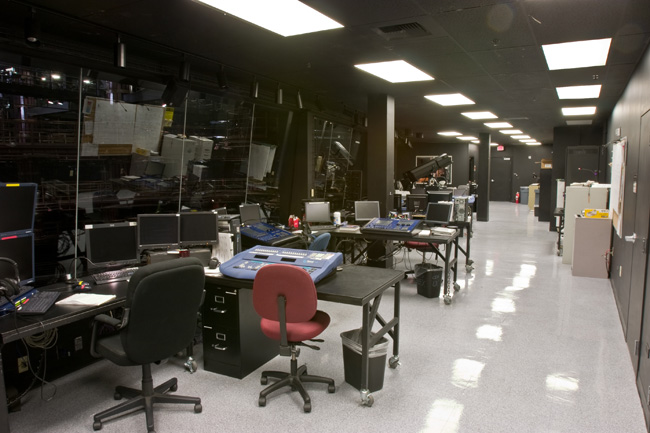
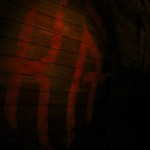

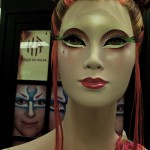

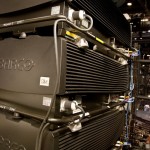
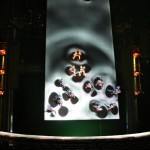
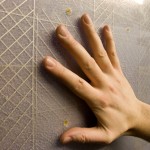
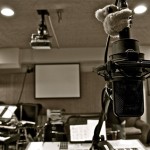

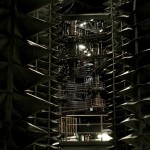
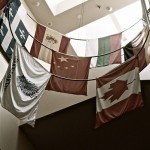


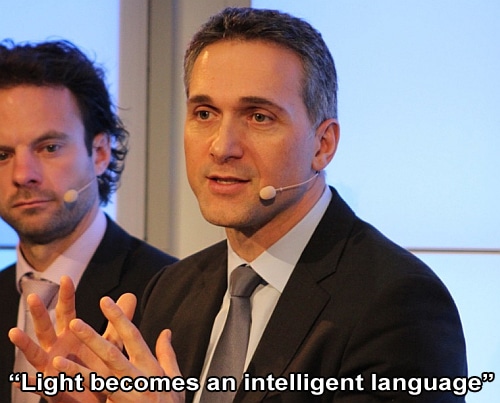
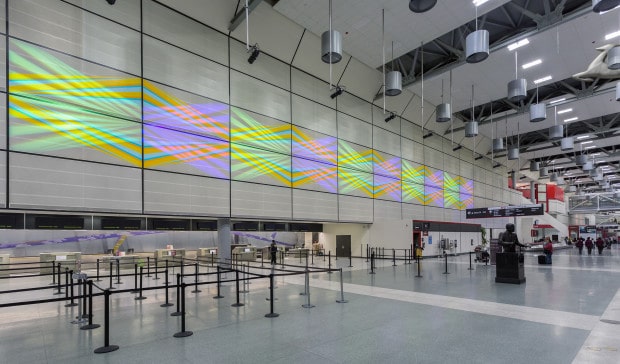

LOVE IT! Stunning photos and facts, always something new! Cant’ wait to see the show again!
Comments are closed.